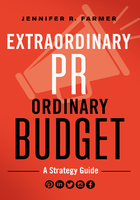Appreciative Resilience
I can be strong
and still bend
I can be flexible
and made of steel
I can fall
and rise again
I can lead you
and follow you
Be with me . . .
JMCB 2017
Leadership resilience is a state toward which one is always journeying. Leaders, whether formal or informal, don't get to arrive and reside in resilience forever. Leadership is complex with its multiple demands, constant change, and ups and downs. Leaders cannot predict what challenges, issues, and random events they will be called on to face, and they need tools and practices to advance resilience. There is always something more to learn and to practice on the journey toward resilience. This book is a commentary on that journey and that practice. It is about how leaders can build what we call appreciative resilience by using appreciative inquiry as they journey through the constantly evolving landscape of hope, despair, and forgiveness.
This dynamic interweaving of appreciative inquiry processes and philosophy with a deep exploration of hope, despair, and forgiveness opens new ways of reflecting on and practicing being a resilient leader. Appreciative resilience aims to sustain leaders as hope blooms, as despair visits, and as forgiveness opens their hearts. In our work, we have come to believe that practicing appreciative resilience in each of these states—hope, despair, and forgiveness—generates leadership resilience over time. This book is a commentary on that belief and an invitation for you to journey with us. In journeying through this commentary, you will find reflective and practical processes to build your own appreciative resilience.
We fully recognize that this commentary presents one idea of how to view and foster resilience. This book is not designed to be the definitive answer to leadership resilience. Rather, it is designed to tell stories that provide insight; offer a useful model for building resilience with appreciative inquiry in times of hope, despair, and forgiveness; engage you in reflection on your own resilience; and offer thoughts on organizational and team resilience. We recognize that leadership resilience is refined in the crucible of leading in the everyday and that leaders forge their own thinking; this is ours.
Over the course of the book, we explore this thinking in depth. We unpack and repack the component parts and related concepts of the appreciative resilience model in order for leaders to apply these ideas to their own work and reflect on how to be appreciatively resilient. To begin that process, we offer a quick primer on some of the key ideas and definitions, introduce the appreciative resilience model, and provide some notes on reading this book.
Appreciative inquiry (AI) is an approach for positive change in individuals, groups, and organizations. Its assumption is simple: every human system (individual, group, organization, community) “has something that works right—things that give it life when it is most alive, effective, successful, and connected in healthy ways” (Cooperrider, Whitney, and Stavros 2003, xvii). AI focuses on what is working well (appreciate) by engaging people in asking questions and telling stories (inquire) (Watkins and Mohr 2001). To appreciate means to value, to increase in value, and to be fully aware. In being fully aware, one does not ignore issues and problems; rather one seeks to deeply see what is and find within that the fertile nuggets that can be made to grow. To inquire is to ask questions; to inquire into what might be, what can be; and to dream a new and possible future. All AI processes are built from these two fundamental concepts of appreciating and inquiring. Appreciative inquiry is narrative; it is about telling and listening to stories in order to build a positive future together. Finding those things that are working “right” and working well allows people to build the future together in a highly engaged and participatory way.
Appreciative inquiry was developed by David Cooperrider and others in the 1980s. AI prompted a catalytic shift from a problem focus to a possibility focus in how organizations, systems, teams, leaders, and individuals approached the future they were trying to build. Appreciative inquiry is used in many contexts around the world: for strategic and other kinds of planning, team development, coaching, organization development, research, and in every other way imaginable. Appreciative inquiry includes tools and processes for positive change and is also a way of being in the world. In the works cited throughout this book, you can find models, processes, and principles for applying appreciative inquiry to a wide range of situations.
Appreciative inquiry is at the core of appreciative resilience work. Over the course of the next chapters, you will find many of the principles and models of appreciative inquiry applied to the ideas, processes, and practices of resilience.
Leadership can be a catalytic force for positive futures in the world. In this resilience work, we are writing for leaders who undertake this kind of leadership. These leaders care about creating something that serves to uplift, to enhance, and to foster. We seek to help these leaders be resilient for themselves and to create resilience in their teams and organizations. We recognize that leaders are not always good and that not every leader seeks to build positive futures. However, in our work, we are interested in helping leaders who do. Consequently, for the purposes of this exploration of appreciative resilience, we define leadership as leading for and with others for the purpose of creating positive change in the world. That change can be in the neighborhood block, in the executive suite, in profit or nonprofit organizations, in youth and senior organizations, in communities, in global organizations—everywhere where leaders, formal or informal, undertake leadership. Leadership is about leaders attending to how they are being in the world as they are doing their leadership work. This book offers insights for leaders about how to foster their resilience as they undertake the leadership of positive change.
Resilience is the ability to sustain or persevere in the most complex of leadership and life experiences. Leadership demands a great deal from people. The need for leaders to be resilient arises for many reasons. To be resilient is to have the ability to adapt, grow, and change in the face of adversity. This adversity can be large and life changing—for example, losing a loved one, experiencing a tragedy, or losing a job. The adversity can also be small, such as the failure of a plan or idea—what we call a glancing blow. Large or small, these events have an impact on leaders. When leaders pick themselves up, they are being resilient. We believe that resilience can be learned and practiced. This book is about just that—learning and practicing resilience by using appreciative inquiry. We haven't found in our conversations with leaders or in our own leadership life a perfect formula for being resilient, nor is there a vaccination against despair. Rather, being resilient is about finding an individually created path forward and having the strength to withstand the current circumstances.
Appreciative resilience is an area of leadership resilience that is built from the practice of appreciative inquiry. It approaches resilience from the place of assisting leaders in developing their own understanding and personal call to resilience by using appreciative inquiry principles and practices. Leaders often think of resilience as a response to weathering despair, but in appreciative resilience work, resilience is fostered from a place of maximizing the use of appreciative exploration through the leadership states of hope, despair, and forgiveness.
Hope, despair, and forgiveness. We think that the interplay between these three elements and taking an appreciative inquiry approach to them are at the core of resilience. Each one of these elements has a powerful impact on leaders because it influences leaders' ability to respond to the fray of a leadership life. These elements have captivated philosophers and existentialists throughout the centuries. We could spend our time here just in creating and re-creating the definitions of these states. We are not going to do that. We offer definitions that we have been working with that have some power to generate deep reflection and conversation. We understand that these are not the only definitions of hope, despair, and forgiveness.
Hope is needed for leaders to move forward. We are not referring to the kind of hope that envisions personal gain or power over others, but rather to the kind of hope that creates space for power with others to generate better futures. This does not mean that there will be no conflict or that people will not fail themselves and others. Hope is about believing that no matter what the state is at this moment, the future will open to other possibilities. Hope is generative; it looks at what is and what might be and then begins to gather the force required to move toward that future. Hope is not a simple concept. It is not about being joyful or optimistic all the time. In using appreciative inquiry to explore how one fosters hope and a hopeful view, leaders can begin the journey of finding their resilient selves and begin to use a hopeful view as an element of resilient leadership.
Despair, in a leadership context, is that “dark night of the soul” (Moore 2004) where leaders do not see a clear path forward, where outcomes cannot be seen, where doubts arise about whether anything matters or is possible. Almost all leaders over a lifetime will find themselves in states of despair at times; for some it might be only momentary, and for others it might be life defining. Critical to being resilient is the ability for leaders to reflect on and tap into their capabilities to sustain themselves as they reside in and move through states of despair. The experience of despair can, paradoxically, show leaders what they truly believe in, what makes them strong, and how they can use their power most generatively. Who we are in times of despair is at the core of our resilient selves. This appreciative resilience work draws leaders to focus on their capabilities in times of despair and, through a series of processes, assists leaders in amplifying and growing those capabilities in order to become more resilient.
Forgiveness is an essential part of resilience because it can be the animating energy that makes forward movement and leadership agency possible. In forgiving, leaders can shift and move by choosing to give up resentment, anger, and fear and by stepping toward accepting things as they are. Forgiveness is a means of moving back to hope from despair or residing in despair with grace. It creates space for dialogue to begin and for change to take place. As a practice, forgiveness is challenging to cultivate because it is a conscious act undertaken with powerful will and determination. It requires one to look into one's leadership and deeply forgive the failures—others' and one's own. It is only in this place of forgiveness that we literally have our minds changed and can see the possibilities before us. Forgiveness has an element of letting go and looking forward in expectation of positive change, of being in the moment, and of seeing the strengths and possibilities in the midst of challenges.
The appreciative resilience model helps leaders build resilience by using appreciative inquiry to reflect on and explore the leadership states of hope, despair, and forgiveness. The outer ring includes appreciative inquiry (AI), AI processes, AI principles, being AI, and AI leadership. The inner core is the interplay of the states or elements of hope, despair, and forgiveness. These three states or elements of leadership are interlocked. They ebb and flow through a leader's experience. At times, the circle of hope will almost eclipse the circles of despair and forgiveness. At other times, the circles of despair and forgiveness will be the predominant elements at play in a leader's life. The model and its related exercises are designed to help individual leaders, teams, and organizational groups reflect on and build their resilience.
A leader we interviewed for this book wrote a wonderful story of how the ebb and flow of hope, despair, and forgiveness played out for him:
image An Hour That Changed My Life
Our founding president of eighteen years announced that he would be retiring within the year. I had served the organization for seventeen years in a number of progressively more senior roles. I had addressed a number of challenges, including stakeholder issues and the formal unionization of our staff. I supported the founding president in all ways. During those seventeen years, I had also completed my doctoral work at an Ivy League institution, focusing specifically on leadership and community development. The combination of these experiences instilled in me a belief not only that was I qualified to be our next president but also that the range of experiences over the previous seventeen years had uniquely prepared me for the position.
The board conducted a national search, and I was the only internal applicant. I was excited about the prospect that I could lead in the years ahead, addressing our challenges at that time. The interview process allowed me to articulate an organizational vision nurtured by belief in my abilities and my potential to lead our organization to a compelling future.
As the presidential search process reached its final stages, I became one of three finalists, and then one of two finalists. I had the credentials; I knew the organization; I knew the community; I loved this place and had given it my all for my entire career. Trying hard not to be overconfident, I nevertheless felt like the board's choice should be obvious.
On an overcast, rainy, early spring morning, the chair of the board visited my office to let me know that the board had selected the other candidate to be the next president, and he had just let her know that he intended to accept the position. The board was “grateful for my service but, at this time, they felt they needed new blood.”
I was devastated. After she left my office, I closed the door and cried. I felt I had bled for this organization.
I had given my all for seventeen years, and yet my “blood” wasn't good enough. The pain of rejection, the grief of having lost an opportunity that I felt I deserved, that I felt was inevitable, was palpable. Why didn't I deserve the opportunity to lead?
Within the hour, I received a telephone call from the man who had just accepted the position as our next president. He couldn't have been more gracious, and he informed me that he understood how I felt. He, at one time in his career, had been in the same position of having been rejected as an internal candidate for a leadership role. He told me that he had learned a lot about me during the interview process and that he wanted me on his team as he assumed the presidency. I was grateful for this reassuring call; however, I was still reeling from the hurt, pain, grief, and anger at the board for their decision.
My hour of learning about the board's rejection and hearing the next president's desire to have me on his team is an hour that ultimately changed my life. In looking back, it was probably the best thing that could have happened to me. Lessons in humility are always good for aspiring leaders. In supporting our new president, I gained valuable new experiences by serving as a senior leader for eight years. I was the right person at the wrong time. However, these opportunities to mature as a leader made me, eight years later, the right person at the right time as I assumed the presidency of the organization.
In this story, the hope, despair, and forgiveness are represented so clearly. This leader had hope that he was the right person to lead the organization and clearly suffered despair in not achieving what he set out to do. The most powerful part of this story is his decision to reside in forgiveness and work with the candidate who had bested him, before he actualized his dream of becoming president. In leadership, there are many things large and small that foster hope, and many things, from a glancing blow to a devastating event, that can cause despair; forgiveness is a powerful, willful choice that leads to venturing and evolving.
When reading this book, imagine holding the appreciative resilience model in your hands as a three-dimensional object that can be taken apart, deeply examined, and then carefully put back together. In the next chapters, this is what we will do. Each chapter addresses specific practices of resilience that you can apply and adapt to your own work.
Woven into these chapters are the voices of other leaders. Some wrote short vignettes, and others we interviewed (see appendix 1 for story prompts and interview questions). We have kept their names, positions, and locations anonymous to respect their confidentiality. They come from various walks of life; work in education, social work, the private sector, and government; and hold various positions, from CEO to informal leaders to business owners. These people offer insights into leadership, being resilient, and working with hope, despair, and forgiveness. In their interview responses and stories, their words reflect the complexity of resilience.
The appreciative resilience model and this book are not linear journeys. You needn't read the chapters in order, nor work with the model beginning with hope. We encourage you to begin where you need to. We described our journey to developing the appreciative resilience model in the prologue. This chapter provides context and an introduction to the appreciative resilience model. Depending on where you are in your leadership journey, you may be drawn to the conversation on how appreciative inquiry and appreciative resilience are linked and work together—chapter 2. Hope and a hopeful view in leadership can uplift, and you may be drawn to begin with the possibilities that hope provides—chapter 3. Despair and how you might stand within a leadership storm by uplifting strengths might be more important at this moment in your leadership life—chapter 4. The intersection of power, privilege, and difference and their impact on organizational despair are also captured in chapter 4. Deeply residing in the possibility of forgiveness and what that can offer to your leadership life could be compelling to you at this moment—chapter 5. Chapters 6 and 7 move into appreciative resilience practice. They draw together the processes of building resilience with appreciative inquiry while journeying through hope, despair, and forgiveness. In chapter 6, we focus on resilience practices in the everyday of leadership work. After having reflected on the ideas in the book, you may want to have a practical way to share these ideas with others. In chapter 7, we have provided a workshop with facilitation commentary for that purpose. Also in chapter 7, there are many appreciative questions that can be drawn out of the workshop and used as individual reflection prompts. In appendix 2, there is a version of the workshop without the facilitation commentary. At the ends of chapters 1 through 6, you will find appreciative questions to prompt personal leadership reflection and build on the practice of resilience. In the epilogue is a series of invitations for you as a leader to continue your evolution in becoming more and more resilient. We have learned for ourselves that being resilient is a constant state of evolution as we are forever and irrevocably changed by leadership experiences and there is always an invitation to grow and learn.
Reflection
Think for a few minutes about the journey of your leadership life.
1. Pick a few words that describe you in that journey. (For example: trustworthy, loyal, collaborative)
2. What do those words mean for you?
3. Why are they important?
4. In what positive ways have these influenced your leadership over time?















